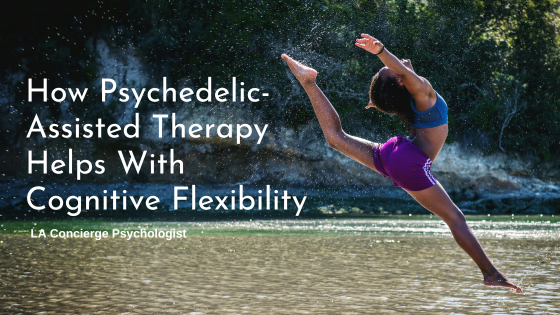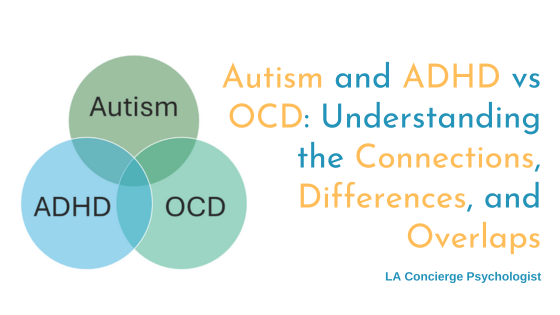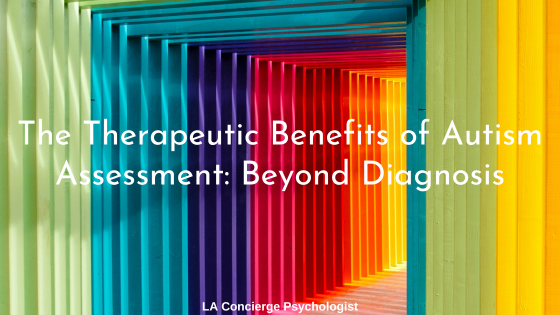There’s been growing recognition of the significant overlap between autism, gender diversity, and identifying as LGBTQIA+. Autistic teenagers were found to be 7.59 times more likely to express gender variance compared to their non-autistic peers[1]. Similarly, a study estimates that between 42-69% of autistic people identify as same-sex attracted or as a sexual minority[2]. This intersection presents unique challenges and experiences for those navigating multiple identities. The National LGBTQIA Health Education Center explored this connection further. Though the reasons why are not well understood, “one possibility is that neurodiverse people tend to be less aware of, or less susceptible to, societal pressures and gender norms; therefore, they can express their gender identity or sexual orientation without concerns of being judged or fitting into certain roles.”[3]
This perspective offers an intriguing explanation for why autistic individuals might be more likely to identify as gender diverse or LGBTQIA+, suggesting that your neurodivergent brain might allow you to explore and express your identity more freely without being as constrained by societal expectations. Autistic people may experience and express their gender in ways that differ from neurotypical expectations. For example, they may be more fluid and more likely to identify as non-binary. They may find it difficult to articulate their gender identity using typical language or concepts.
Understanding this overlap is important so gender-expansive and LGBTQIA+ neurodivergent people can access mental health and social support that takes into account their unique experiences. We’re going to look at some of the challenges queer autistic adults face, explore some self-care tips, and discuss how a neurodivergent-affirming therapist can support you.
Why are Autistic People More Likely to be Gender-Expansive and LGBTQIA+?
While no one knows for sure—and your identity is valid regardless of the reasons behind it—researchers have some theories on why gender diversity and LGBTQIA+ identities are higher among autistic individuals.
Some of the most prominent ideas are:
- Less influence from social norms: As mentioned above, as an autistic person, you might be less affected by social expectations about gender and sexuality and have difficulty relating to the social aspects of gender roles. This could allow you to explore your identity more freely.
- Deep exploration of interests: Many autistic people have intense interests. If gender or sexuality becomes a focus, you might explore these aspects of yourself more thoroughly, or you may relate to a character strongly and realize you share some aspects of their identity.
- Heightened self-awareness: Autism often involves a lot of self-reflection. This might lead to a deeper understanding of your gender and sexual identity.
- Biological factors: Some researchers think there might be shared biological influences on autism and gender identity, but this is still being studied.
Unique Challenges Faced by Neurodivergent LGBTQIA+ People
Discrimination and stigma are common hurdles for most autistic people. When that stigmatized identity intersects with another, those hurdles become major barriers. Autistic members of the LGBTQIA+ community often face challenges distinct from those experienced by either community separately. This can manifest in several ways:
Double minority stress
Navigating both neurodivergence and LGBTQIA+ identity can lead to compounded minority stress, potentially increasing the risk of mental health issues and C-PTSD. This can compound even further if the individual is also a racial/ethnic minority.[4]
Communication barriers
Autistic people may struggle with neurotypical social communication, which can make it harder to connect with LGBTQIA+ communities or express their identity in ways neurotypical people easily understand.
Sensory issues in LGBTQIA+ spaces
Many LGBTQIA+ social spaces, like clubs and pride events, can be overwhelming for autistic individuals due to sensory sensitivities. Finding community can be difficult, but it becomes more challenging if the typical ways to meet other LGBTQIA+ people cause sensory overload.
Increased vulnerability
Both LGBTQIA+ and autistic people can face discrimination, exploitation, or bullying for their differences. The combination of social communication differences and LGBTQIA+ identity may increase vulnerability.
Healthcare disparities
Accessing affirming healthcare that understands autistic or LGBTQIA+ needs can be challenging enough, but finding sympathetic practitioners who understand how they can intersect is very difficult. This can make healthcare visits unpleasant for autistic LGBTQIA+ adults, making them less likely to get medical care.
Intersectionality and Diversity within Neurodivergent Adult LGBTQIA+ Communities
While the intersection of autism, gender diversity, and LGBTQIA+ identity presents unique challenges and experiences, it’s important to recognize that this community is far from monolithic. The experiences of neurodivergent LGBTQIA+ individuals can vary greatly based on a multitude of factors. Below are some of the ways diversity can further intersect within this community.
Racial and ethnic diversity
Race and ethnicity play a significant role in shaping the experiences of neurodivergent LGBTQIA+ individuals. People of color within this community often face additional layers of discrimination and challenges. Autistic people of color are often diagnosed later in life or misdiagnosed due to racial biases in healthcare and diagnostic criteria primarily based on studies of white males.
Some cultures may have greater stigma around neurodivergence or LGBTQIA+ identities, leading to increased stress and potential isolation. There’s also often a lack of representation of neurodivergent LGBTQIA+ people of color in media and support resources, which can lead to feelings of invisibility or exclusion.
Socioeconomic factors
Socioeconomic status significantly impacts access to resources, support, and overall quality of life for neurodivergent LGBTQIA+ individuals: Lower-income individuals may struggle to access appropriate mental health care, gender-affirming treatments, or autism-specific support.
Additionally, the intersection of neurodivergence and LGBTQIA+ identity can compound employment difficulties, potentially leading to economic instability. LGBTQIA+ youth are at higher risk of homelessness, and this risk may be exacerbated for those who are also neurodivergent.
Age-related experiences
The experiences of neurodivergent LGBTQIA+ individuals can vary greatly across different age groups. Younger generations may have more access to information about neurodiversity and gender diversity, potentially leading to earlier self-identification and access to support. However, older adults might have navigated much of their lives without understanding their neurodivergence or feeling safe to express their LGBTQIA+ identity, leading to unique challenges in later-life identity exploration. Many individuals receive autism diagnoses in adulthood, which can lead to a period of identity recalibration and retrospective understanding of past experiences.
Cultural and religious influences
Cultural and religious backgrounds can also significantly shape the experiences of neurodivergent LGBTQIA+ individuals. Some cultural or religious environments may be more accepting of neurodiversity but less accepting of LGBTQIA+ identities, or vice versa. Individuals from conservative religious backgrounds might struggle to reconcile their LGBTQIA+ identity with their faith, adding another layer of complexity to their neurodivergent experience. Additionally, different cultures have varied understandings and expressions of gender and sexuality, which can influence how neurodivergent individuals perceive and express their LGBTQIA+ identity.
Varied experiences across the autism spectrum
No two autistic people’s experiences are the same, and the experiences of LGBTQIA+ individuals can vary greatly. Some autistic individuals may be non-speaking or have different communication styles, which can impact how they express and explore their LGBTQIA+ identity. The different degrees of sensory sensitivities can affect participation in LGBTQIA+ spaces and events, which are often sensory-rich environments. For some, gender or sexuality might become a special interest, leading to deep exploration and understanding, while others might focus their interests elsewhere.
Intersections with other forms of neurodivergence
Many individuals experience multiple forms of neurodivergence, each adding unique layers to their LGBTQIA+ experience. Being diagnosed with AuDHD, dyslexia, OCD, or Tourette’s syndrome, for example, can greatly impact how you navigate life as a neurodivergent LGBTQIA+ person.
Geographic variations
The experiences of neurodivergent LGBTQIA+ individuals can also vary greatly depending on their geographic location. Urban areas often have more resources and support for both neurodivergent and LGBTQIA+ individuals, while rural areas might have fewer specialized services. Different countries, states, or regions have varying levels of legal protections for neurodivergent and LGBTQIA+ individuals, impacting safety and quality of life. Societal acceptance of neurodiversity and LGBTQIA+ identities can also vary greatly between different geographic areas, influencing an individual’s ability to openly express their identity.
Understanding and acknowledging these diverse experiences within the neurodivergent LGBTQIA+ community is key for providing appropriate support, developing inclusive policies, and fostering a more nuanced understanding of this intersectional group’s challenges and strengths.
By recognizing the multifaceted nature of identity, we can work towards creating more inclusive and supportive environments for all neurodivergent LGBTQIA+ individuals, regardless of their specific combination of intersecting identities.
How Autistic LGBTQIA+ Adults can Practice Self-Care and Acceptance
Being neurodivergent, gender expansive, and LGBTQIA+ can be lonely, so finding a supportive and safe community that understands your experience is important for your overall mental health. It’s not always easy to meet people, but looking for local groups using sites like Meetup or joining online forums or Facebook groups for autistic LGBTQIA+ people can be helpful. Even if you don’t find a specific community in the group, they can usually point you toward local, relevant events or online communities that match your interested.
Finding a community often allows people to learn more about neurodivergent, gender, and LGBTQIA+ topics and see things in a new light, which can help you understand yourself better and have self-compassion. Remember, it’s okay to ask for accommodations in LGBTQIA+ spaces, like quieter areas or clear communication of social expectations.
Finding ways to express your identity safely and comfortably allows you to celebrate and explore your intersecting identities. This might be through art, writing, music, fashion, or any other medium you enjoy. It can also be a good way to connect with people of similar interests and identities in environments more suited to your needs.
Remember, there’s no rush to figure everything out. It’s okay to take your time exploring your identity. Your combination of identities makes you uniquely you, and it’s something to be celebrated!
How a Neurodivergent-Affirming Therapist can Support Autistic Adult LGBTQIA+ Clients
Neurodivergent LGBTQIA+ people very often have trauma from living life in a society that neither accommodates nor understands them. So when their therapist’s office feels like the rest of the world, unsupportive and uninformed, they are unlikely to let themselves be vulnerable with that therapist. Without that vulnerability, progress is slow or non-existent.
Neurodivergent-affirming care significantly improves mental health outcomes for both autistic and LGBTQIA+ individuals. This affirmation becomes even more crucial for those at the intersection of these identities.
Your therapist can help you explore and express your identity, help you build resilience and self-advocacy skills, and work through your lived experiences as an LGBTQIA+ neurodivergent adult.
When looking for therapists or doctors, try to find one who understands both autism and LGBTQIA+ identities. It’s okay to ask potential providers about their experience in these areas. Some affirming therapists will have their stance on neurodiversity written out on their site. Your practitioner should respect your self-identified gender and sexual orientation and use your chosen names and aligned pronouns consistently.
While your neurodivergent-affirming therapist might not be perfect at everything and may make some mistakes, the important difference is that they should be more aware of their mistakes and the consequences and be prepared to learn and adjust. It should be a safe space for you to be open and comfortable.
We Offer Support for Gender Diverse and Autistic LGBTQIA+ Adults
The intersection of autism, gender diversity, and LGBTQIA+ identity presents both challenges and opportunities for personal growth and self-discovery. If you’re autistic and gender expansive, our adult autism specialists can provide you with care in more ways than one. We understand the impact of intersectionality and are here to support you.
As a neurodivergent-affirming therapist in LA, we provide informed, compassionate care that recognizes and celebrates the unique experiences of neurodivergent LGBTQIA+ individuals.
If you’re interested in exploring these topics further with a therapist who understands these intersecting identities, we’re here to help. Feel free to reach out for more information or to schedule an appointment.
Send us a message or book a free 20 minute consultation call with Dr. Barajas, Dr. Goldman, or Dr. Smith Han.



